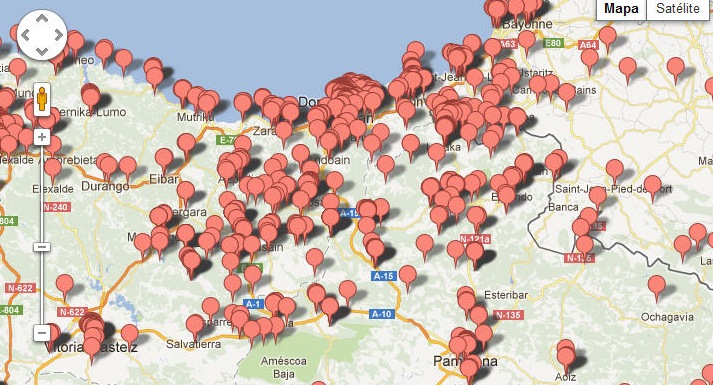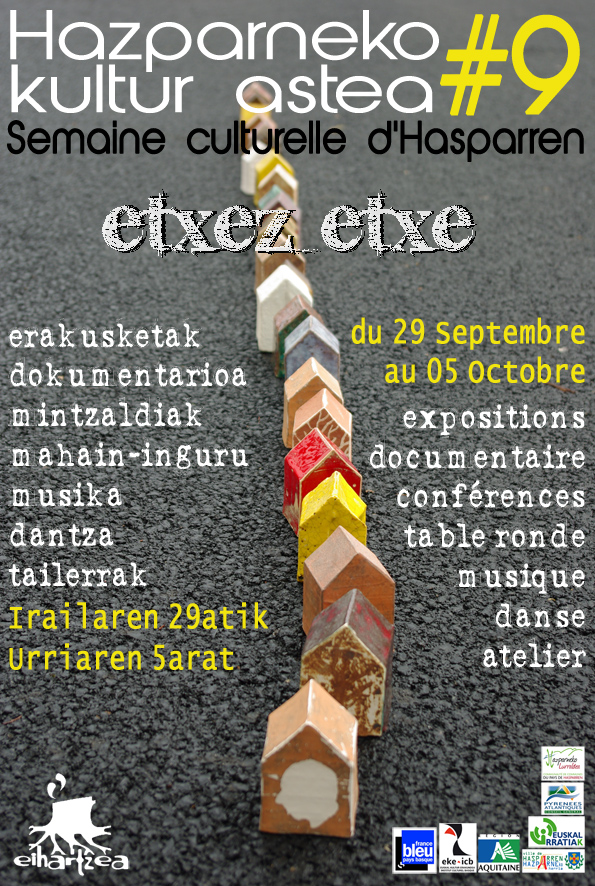The audience is the mother of self-invention
Friday, September 28th, 2012
The audience is the mother of self-invention
Opening: 29 September 2012, 4-10 pm
Dates: 29 September – 24 November 2012
Pierre Bal-Blanc, Nina Beier, Cornelius Cardew, Ján Mančuška, Babette Mangolte, Mattin, Lilo Nein, The Great Learning Orchestra, Olav Westphalen et al.
The audience is the mother of self-invention is an ambitious weekly series of performance-based events and short-lived exhibitions by Swedish and international artists, curators, filmmakers, and musicians that will begin each Saturday. The series launches a new multi-layered programme of activities initiated by Index’s new director Diana Baldon. Exhibitions, workshops and musical performances will focus on presenting and critically contextualising the work of practitioners whose production cross-breeds with contemporary art and resonates with the Foundation’s on-going explorations and interest in visual displays and viewer-related experiments.
Draft Score For An Exhibition, CAC Brétigny (Greater Paris), 2011
Photo: Steeve Bekouet, Brétigny
29 September 2012
Please be punctual: these live works will only be viewable for visitors
already on site when they begin.
5–5.30 p.m. Pierre Bal-Blanc: Draft Score for An Exhibition (2010)
Draft Score for An Exhibition is an exhibition conceived by the French curator Pierre Bal-Blanc in several acts, in which each session adheres to the rules of a score performed either by its author or by a third party. It was first developed by Bal-Blanc as an oral presentation to be performed in response to the invitation to curate the 7th Berlin Biennale. Since then it has been re-staged in 2011 by the artist at Le Plateau, Paris, and Secession, Vienna; by Pierre Simon (mediator for the art center) at CAC Brétigny; by Emilie Parendeau (artist) at the Institut Français du Portugal, Lisbon; and by Giacomo (escort boy) at Artissima art fair, Turin. At Index, Draft Score for An Exhibition will be performed by Viktor Gustav Nyström Sköld, a volunteer who recently completed The Swedish Royal Guard services.
6:00 p.m.–7:00 p.m. Mattin
Express yourself (
You’ve got to make him)
Express himself
Hey, hey, hey, hey
So if you want it right now, make him show you how
Express what he’s got, oh baby ready or not
Express yourself
(You’ve got to make him)
So you can respect yourself
Hey, hey
So if you want it right now, then make him show you how
Express what he’s got, oh baby ready or not
(Text supplied by the artist as project description)
The series initiates Index’s intention to map out still-undisclosed art historical epistemologies. Through this process, Index aims to become an energetic site of identitary and discursive exchange; a stimulating platform for communication where innovative modes of aesthetic and curatorial production are confronted, with a view to address how they contaminate and re-configure one another. Each event will be accompanied with music by, among others, Ben Loveless, Roger von Reybekiel (Fel), Kim West, and sculptural display elements specially designed for Index by Tamara Henderson and Carl Palm.
During this time Index will focus its attention both on artistic and curatorial processes, and on the changing conditions for the presentation and reception of art. Instead of adopting the traditional format of a group exhibition, The audience is the mother of self-invention unfolds as a series of acts that, for three months, become an active form of showing and learning, whilst interrogating the expanded definition of scoring as a trans-scriptive device.
TREATISE by Cornelius Cardew
Copyright 1967 by Peters Edition Limited, London
Reproduced by kind permission of Peters Edition Limited, London an Edition
Peters Group company.
Throughout the 20th century artists have used scores as a way to map out movement and to record thought. Graphic notations, verbal instructions, storyboards and stage directions have been elaborated as de-scriptive and pre-scriptive sign systems, focussing on the ability of artistic processes to translate concept and work. As the legendary Scratch Orchestra (1969-72) examined, they also forged social contracts with members of the public. Co-founded by the British composer Cornelius Cardew, this experimental musical collective encouraged improvisation through inviting untrained musicians to join. For Cardew – who in the mid-1970s became entangled with far-left politics – graphic and text-based scores defied the hierarchy between composer and performer, placing more emphasis on the mutuality of their relationship. This concept was played out in his understanding of “self-invention”, which he described as a process of becoming; of testing the tenacity of both performer and spectator. Today’s nostalgic fascination with Cardew’s radical musical and political practice hints at recuperating the Orchestra’s cultural memory, whilst opening up questions about the difficulties of how to reconcile artistic and political responsibilities.
Babette Mangolte, Four Pieces by Morris, 1993
DVD transferred from 16mm film (colour, with sound, 94 minutes)
Courtesy of the artist and BROADWAY 1602, New York.
Throughout the 20th century artists have used scores as a way to map out
movement and to record thought. Graphic notations, verbal instructions,
storyboards and stage directions have been elaborated as de-scriptive and
pre-scriptive sign systems, focussing on the ability of artistic processes
to translate concept and work. As the legendary Scratch Orchestra (1969-72)
examined, they also forged social contracts with members of the public.
Co-founded by the British composer Cornelius Cardew, this experimental
musical collective encouraged improvisation through inviting untrained
musicians to join. For Cardew – who in the mid-1970s became entangled with
far-left politics – graphic and text-based scores defied the hierarchy
between composer and performer, placing more emphasis on the mutuality of
their relationship. This concept was played out in his understanding of
“self-invention”, which he described as a process of becoming; of testing
the tenacity of both performer and spectator. Today’s nostalgic fascination
with Cardew’s radical musical and political practice hints at recuperating
the Orchestra’s cultural memory, whilst opening up questions about the
difficulties of how to reconcile artistic and political responsibilities.
In the 21st century, artists have been revisiting and re-interpreting the
infinite possibilities presented by scores as classic modernist tools.
Annotations, variations, reconstructions and additions to the originals have
become recognised trans-scriptive methods of work. These have evolved from
the status of draft or documentary materials that stand in for objects,
images or actions, into complex forms that put equal emphasis on both copy
and original, or play with the act of re-staging historic precedents. This
creates a productive space for discussion about the tensions between scoring
and forms of agency involving the audience. Furthermore, it raises questions
about the degrees of authenticity of a performance that transforms into an
image, and its reception as documentary material. During a live event, the
performer, the spectator, the mediating agent and the person behind the
camera observe the action and inevitably enter into a mutually determining
relationship. The presence of the performer is transferred to the presence
of the spectator through the camera.
Nina Beier, Tragedy, 2011
Persian carpet, dog
Courtesy the artist and Laura Bartlett Gallery, London
Photo copyright: the artist
ACCOMPANYING PROGRAMME
05/10/2012, 10 a.m. – 12 p.m.
Anna Koch (artist, choreographer and director of WELD, Stockholm)
08/10/2012, 10 a.m. – 12 p.m.
Anna Kinbom (artist, Stockholm)
These two workshops map out diverse approaches that score action and thought
from a wide spectrum of perspectives (musical, instruction-based, physical,
durational, etc.). By selecting artworks from a collection of historical as
well as recent performance art, participants will learn what extensive
possibilities these approaches can offer, from direct experience to
spectatorial agency, from writing up their own scores to instruct others to
enact them.
For teenagers 16-19
12/11/2012, (time to be confirmed)
The Great Learning Orchestra (musicians collective from all walks of musical
life, Stockholm)
This workshop re-enacts parts of Cornelius Cardew’s celebrated musical
ensemble Scratch Orchestra (1969-72)
For participants of all ages
To sign up please contact Louise Dyhlén on louise@indexfoundation.se or 08
5021 98 38
Index is funded by the Swedish Arts Council, the City of Stockholm, and
Stockholm County Council. This project is kindly supported by Iaspis, the
Austrian Federal Ministry for Education, the Arts and Culture (BMUKK) and
Connect Hotel City. With thanks to Horace Cardew, Elisabet Eurén, Julia Hölz
and the Ján Mančuška Estate (Prague), Santiago Mostyn, Nils Ossian Andersson
AB, Viktor Gustav Nyström Sköld, Stockholms Auktionsverk and all those who
helped bringing these programmes together.
For further information about the programme, please visit
www.indexfoundation.se or contact info@indexfoundation.se
Press: Louise Dyhlén, +46 8 50219838, louise@indexfoundation.se.
New Index opening hours: Tue 11am–9pm, Wed 11am–6pm, Thurs 11am–6pm, Fri
11am–6pm, Sat 4pm–10pm, Sun–Mon closed.
Visiting address: Kungsbro strand 19, 112 26 Stockholm, Sweden

















![proyecto de documentación e investigación de la creación sonora experimental [UN]COMMON SOUNDS](wp-content/uploads/2010/04/uncom_blog.thumbnail.jpg)
